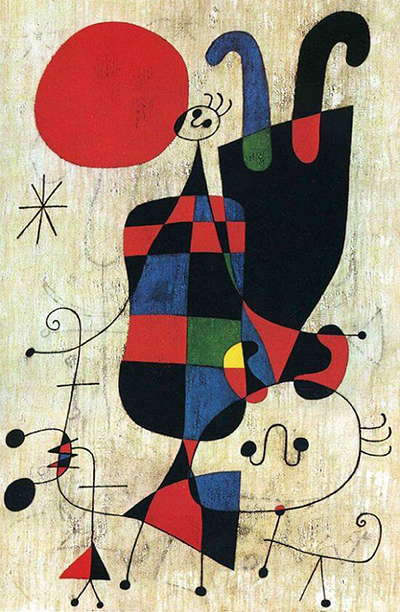The Second World War would bring instability to the world in so many ways, particularly in Europe, and Miro himself was greatily impacted by this horrible period in human history.
Figures and Dog in Front of the Sun came in 1949, just a few years into the rebuilding period in which many uncertainties still remained. Miro himself had fled to the countryside during the long conflict and it was here that he got his ideas for the constellation series which remains one of the highlights of his career. Within the painting found here we can see an artist who has reverted back to lighter backgrounds, perhaps now able to work more freely for the first time in several years. His approach during this period was to rely on shape and line, with a limited set of colours that normally included black, white and red. In this example he also used blue, green and yellow, though these were normally supporting colours to the main content. His red sun is delivered in the top left corner and that is one trademark of the artist which continues through his career. It still seems extraordinary that a slightly off-ish red circle can be "owned" by someone, but essentially most now see that immediately as the work of Miro.
As with most of the artist's abstract creations, we need to take a little time before confidently identifying the items within this composition. The background is a sort of cream or off-white colour, with different shades randomly occurring across the painting in order to give it a natural feel. We find the star and sun alongside each other to establish this as a Miro work. But what of the complex matrix of lines and shapes below them? In this piece the artist creates shapes by passing lines across each other, almost filling in negative space with black and red tones. The main figure is constructed from a violin shaped body with intricate blocks of colour, with additions to this torso arriving with simple lines for the head, arms and legs, in a similar way to a steel iron chair. The head of another person is placed at the foot of the artwork and is larger, suggesting that they are closer to us. We then see perhaps the dog on the right hand side, with a large block of black colour potentially being his head, with blue and red tones used for his ears.




